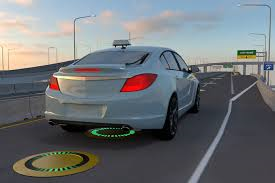
Smartphones Could Turn Into Quantum Sensors Using the Power of OLEDs to Image Magnetic Fields
In the future, it may be possible for smartphones to function as portable quantum sensors, as a new chip-scale technique has been developed using organic light-emitting diodes (OLEDs) to detect magnetic fields.
According to SciTech Daily, scientists from the ARC Centre of Excellence in Exciton Science at the University of New South Wales (UNSW) Sydney have shown that magnetic resonance can be used to create maps of magnetic fields through the use of OLEDs, which are a common semiconductor material used in digital displays, flat-screen televisions, and smartphone screens.

Portable Quantum Sensors to Function at Microchip Scale
Researchers report in the study, titled “Sub-Micron Spin-Based Magnetic Field Imaging With an Organic Light Emitting Diode” published in Nature Communications, that the method operates at the microchip scale and does not require the use of a laser, unlike other common methods.
Current equipment for quantum sensing and magnetic field imaging is relatively large and expensive, typically requiring very low cryogenic temperatures or optical pumping using a powerful laser. By contrast, the OLED sensing device prototype achieved in this work is small, flexible, and mass-producible.
As SciTech reported, the method utilizes electrically detected magnetic resonance (EDMR) and optically detected magnetic resonance (ODMR) to optically detect the resonance of magnetic fields using microwave electronics and a camera.
The techniques involve harnessing the spin behavior of electrons when they are close to magnetic fields. OLEDs are highly receptive to magnetic fields and are already used in mass-produced electronics, like smartphones and televisions, making them an attractive prospect for commercial use in new technologies.
Professor Dane McCamey said that the outcome did not come as a shock as they have been working on it for several years. Nonetheless, they were amazed by the quality of the images they were able to produce, as they were able to discern minute details at a scale of less than one micron, comparable to the size of a neuron or bacteria.
READ ALSO: How Much Damage Can a Nuclear Bomb Do? Here’s What Would Happen During a Nuclear Blast
Made To Be Compatible With Existing OLEd Technologies
It is well-known that OLEDs are found in common electronics like televisions and smartphones. The fact that they are highly sensitive to magnetic fields makes them a strong candidate for commercial development in new technologies, according to a news report by Nanowerk.
Professor McCamey, who is also an Exciton Science Chief Investigator, has said that the device they have created will be compatible with current OLED technologies, allowing for the mapping of magnetic fields over large or curved surfaces. The technology has potential uses in remote medical diagnostics and identifying defects in materials.
The researchers created a patent (Australian Patent Application 2022901738) intending to commercialize the technology. However, despite demonstrating a clear pathway for the technology, more work will need to be done to increase the sensitivity and readout times.
Dr. Rugang Geng, who is also of UNSW and Exciton Science, stated that the pathway is a good sign of things to come, but there is still more progress to be made in the realm of sensitivity and readout times.













One thought on “Smartphones Could Turn Into Quantum Sensors Using the Power of OLEDs to Image Magnetic Fields”